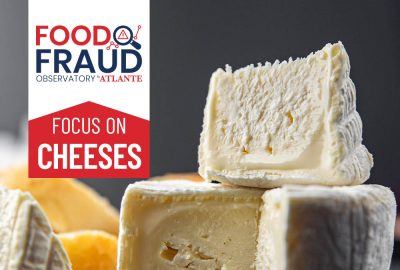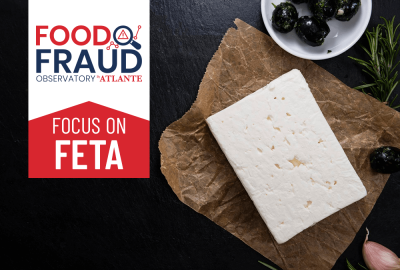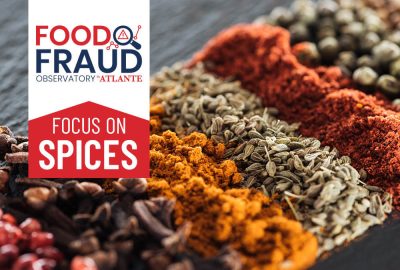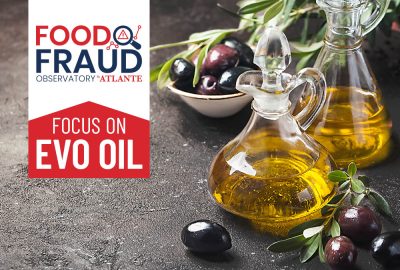Atlante
News
Atlante Food Fraud Observatory: Focus on Vinegar
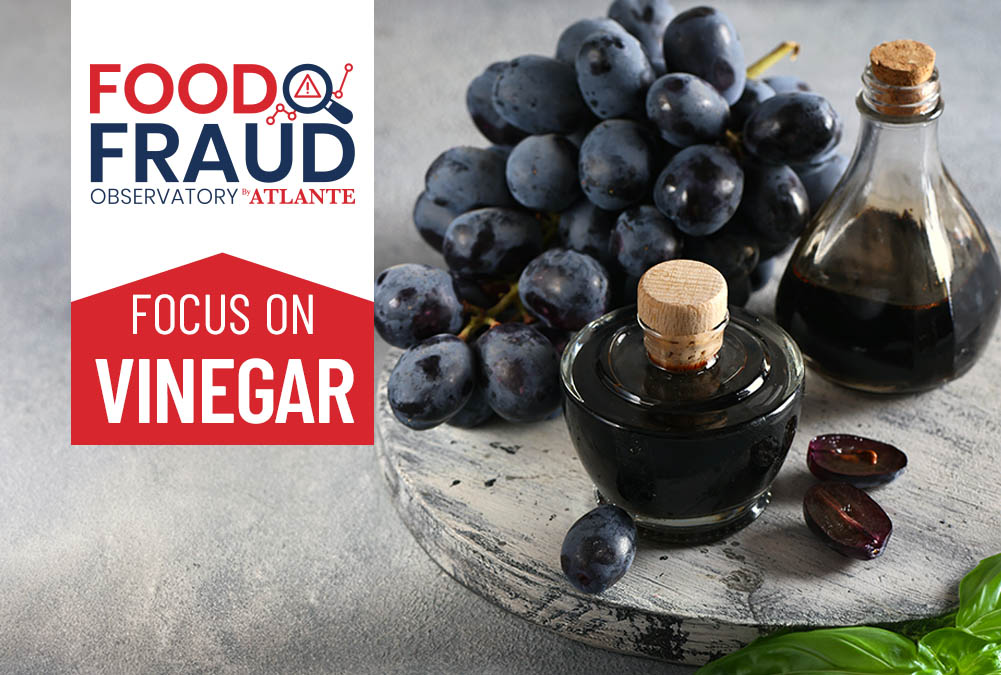
19 August 2025
The Atlante Food Fraud Observatory focuses on risks associated with products and categories. The goal? To raise awareness and ensure that businesses can work with greater responsibility.
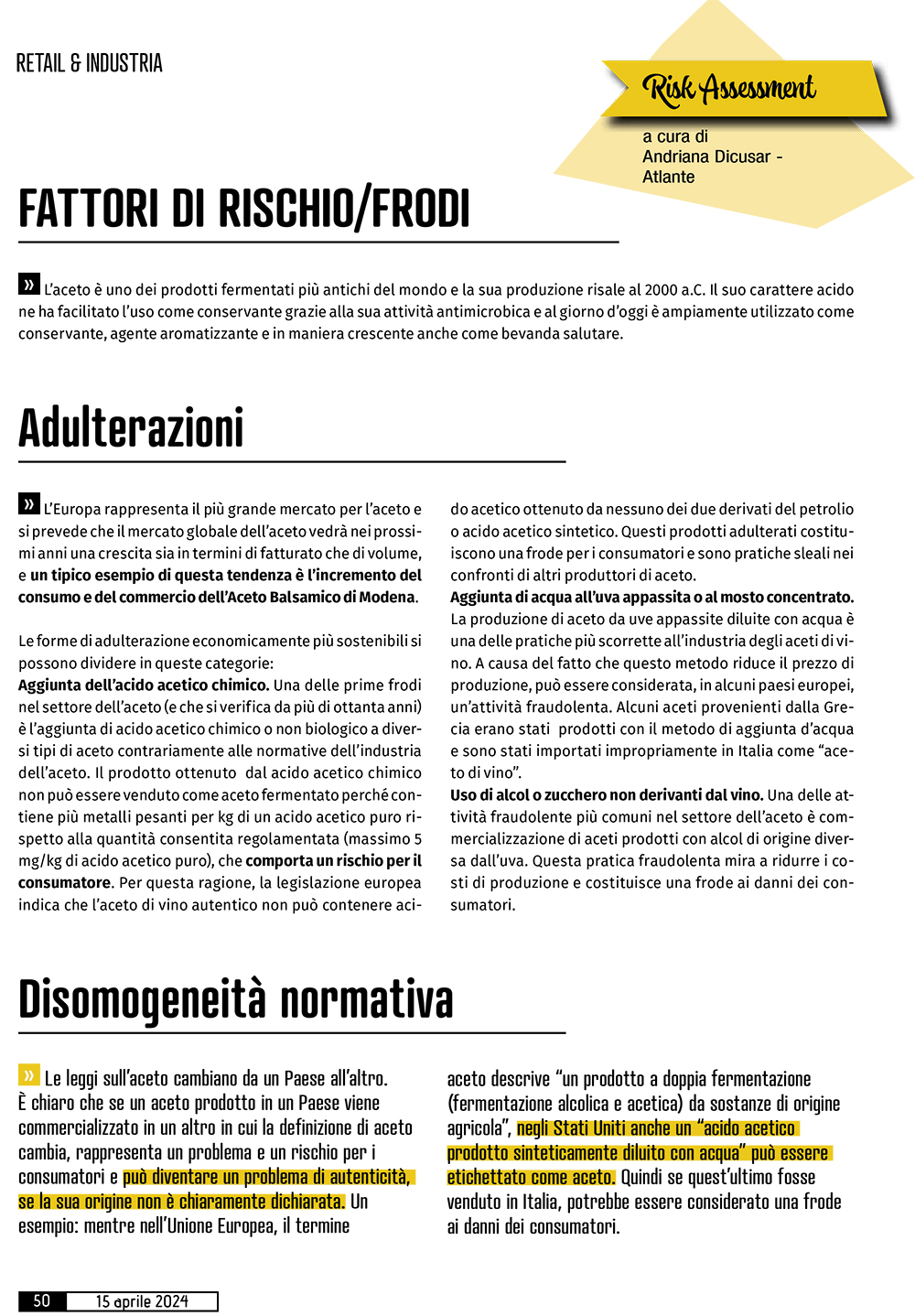
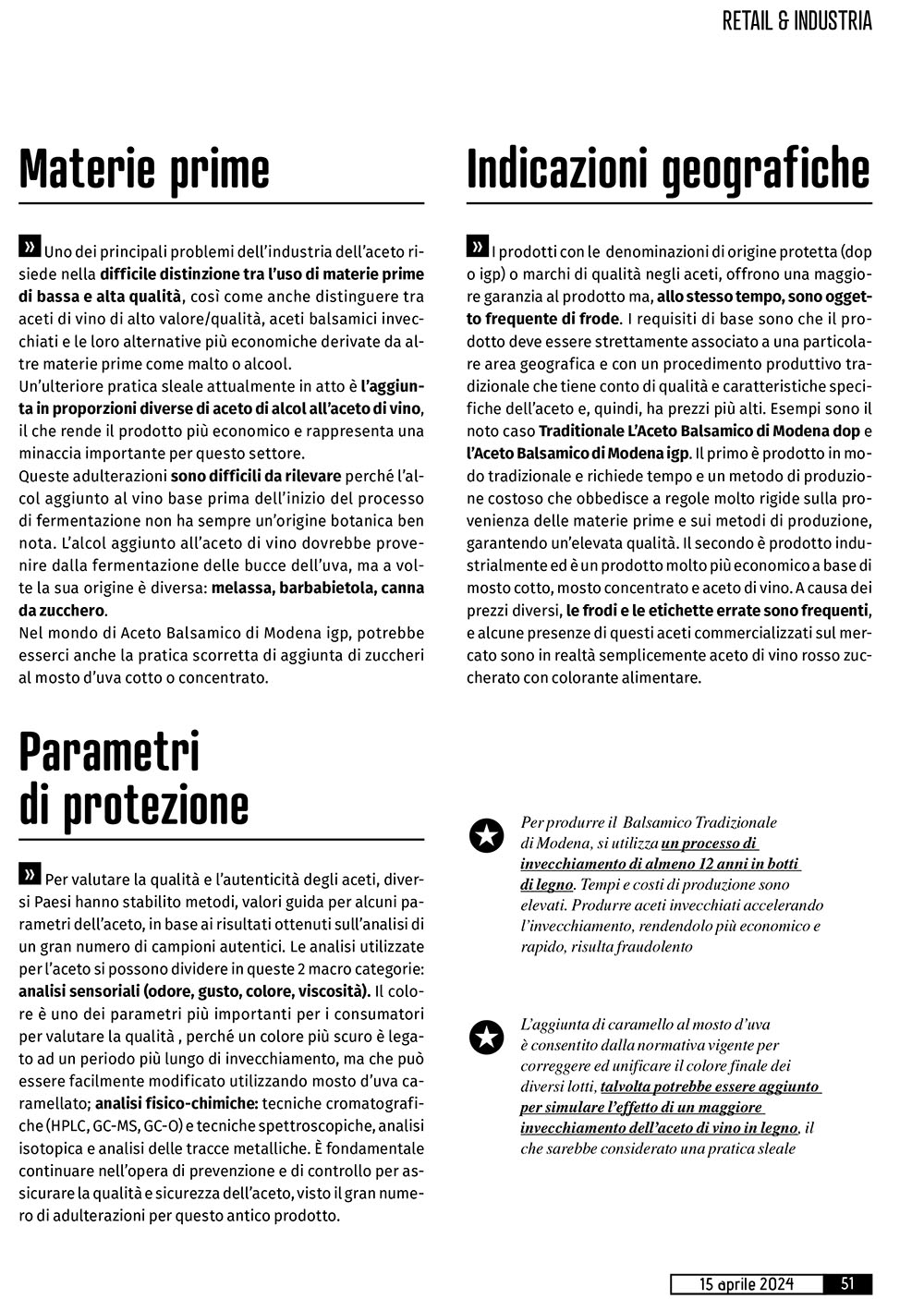
Vinegar is one of the oldest fermented products in the world, and its production dates back to around 2000 BC. Its acidic character facilitated its use as a preservative due to its antimicrobial activity, and today it is still widely used as a preservative, flavouring agent, and, in some countries, as a health drink.
Europe is the largest market for vinegar, and the global vinegar market is expected to see growth in both turnover and volume in the coming years. A good example of this trend is the increase in consumption and trade of Balsamic Vinegar of Modena.
The most economically viable forms of adulteration fall under the following categories:
- National and international regulatory frameworks: Vinegar laws change from country to country. If vinegar produced in one country is marketed in another where the definition of vinegar changes, it poses a problem and risk to consumers and can become an authenticity issue if its origin is not clearly stated. For example, the definition of vinegar in the European Union is “a product of double fermentation (alcoholic and acetic) from substances of agricultural origin”, whereas in the United States even “synthetically produced acetic acid diluted with water” can be labelled as vinegar. However, if the latter were sold in Italy, it could be considered consumer fraud.
- Raw materials: One of the main problems of the vinegar industry lies in the difficult distinction between the use of low- and high-quality raw materials, as well as distinguishing between high-value/quality wine vinegars, aged balsamic vinegars, and their cheaper alternatives derived from other raw materials such as malt or alcohol.
- Addition of chemical acetic acid: One of the first frauds in the vinegar industry, and one that has been occurring for more than eighty years, is the addition of chemical or non-organic acetic acid to various types of vinegar, against vinegar industry regulations. Vinegar made from chemical acetic acid cannot be sold as fermented vinegar as it contains more heavy metals per kilogram of pure acetic acid than the regulated amount (maximum 5 mg/kg of pure acetic acid), posing a risk to consumers. European legislation indicates that genuine wine vinegar may not contain acetic acid made from petroleum derivatives or synthetic acetic acid. These adulterated products constitute consumer fraud and are unfair practices against other vinegar producers.
- Adding water to dried grapes or concentrated must: The production of vinegar from dried grapes diluted with water is one of the most unfair practices in the wine vinegar industry. Since this method reduces production costs, it can be considered fraudulent activity in some European countries. Some vinegars from Greece produced using the water addition method were improperly imported into Italy as ‘wine vinegar’.
- Use of alcohol or sugar not derived from wine: One of the most common fraudulent activities in the vinegar industry is the marketing of vinegars made with alcohol from a source other than grapes. This practice aims to reduce production costs and constitutes consumer fraud.
Another current unfair practice is the addition of different amounts of alcohol to wine vinegar, which makes the product cheaper and poses a major threat to the industry. These adulterations are difficult to detect because the alcohol added to the base wine before the start of the fermentation process does not always have a clear botanical origin. The alcohol added to wine vinegar should come from the fermentation of grape skins, but may sometimes come from molasses, beet, or sugar cane.
In the world of Balsamic Vinegar of Modena PGI, another unfair practice is the addition of sugar to cooked grape must or concentrate. - Geographical indications: Products with protected designations of origin (PDO or PGI) or quality marks offer a greater guarantee for the product but are often subject to fraud. The basic requirement is that the product must be closely associated with a particular geographical area and with a traditional production process that takes into account the specific qualities and characteristics of the vinegar, commanding higher prices.
An example is the well-known Traditional Balsamic Vinegar of Modena PDO and Balsamic Vinegar of Modena PGI. The former is produced in the traditional way, which is time-consuming and costly. It adheres to very strict rules on the origin of raw materials and production methods and guarantees high quality. The second is industrially produced and is a much cheaper product based on cooked must, concentrated must, and wine vinegar through a complicated process. Because of the different prices, fraud and mislabelling are frequent, and many brands of these popular vinegars on the market are simply red wine vinegars with the addition of sweeteners and food colouring.
- Production process and ageing: Traditional Balsamic Vinegar of Modena requires an ageing process of at least 12 years in wooden barrels. The organoleptic properties of the vinegar developed during ageing make the finished product very appealing. However, production time and costs are too high to allow for a high profits. The aim of the fraud is to produce aged vinegars with the same organic characteristics associated with ageing as cheaply and quickly as possible by accelerating the ageing process.
- Addition of caramelised grape must: The addition of caramel to grape must is permitted under current regulations to correct and unify the final colour of different batches. Sometimes it can also be added to simulate the effect of ageing wine vinegar in wood, which would be considered an unfair practice.
To assess the quality and authenticity of vinegars, several countries have established methods and guidelines for certain vinegar parameters based on the results of the analysis of a large number of authentic samples. The analyses used for vinegar can be divided into two macro categories:
- Sensory analysis (smell, taste, colour, viscosity). Colour is one of the most important parameters for consumers to assess quality, because a darker colour is linked to a longer ageing period, but can easily be changed by using caramelised grape must.
- Physical and chemical analysis. Chromatographic (HPLC, GC-MS, GC-O) and spectroscopic techniques, isotopic analysis, and trace metal analysis.
It is essential to continue prevention and control activities to ensure the quality and safety of vinegar given the large number of adulterations of this ancient product.
Impegno e Collaborazione: L’iniziativa di Atlante per Combattere le Frodi Alimentari
Atlante ha da sempre una particolare attenzione per i rischi legati alla frode alimentare. Già lo scorso luglio 2023, Atlante ha avviato il progetto di Food Fraud Risk Assessment: un solido piano dedicato alla valutazione dei rischi connessi alla frode alimentare.
All’interno di questo importante piano si inserisce la collaborazione con GDO Week per una rubrica mensile dedicata all’antifrode alimentare. Gli articoli usciranno a cura dell’Osservatorio Food Fraud di Atlante con la firma di Enrico Santi, Quality Assurance Manager.
Ogni articolo offrirà approfondimenti, analisi e best practices per affrontare la complessità delle frodi alimentari.
Questa sinergia evidenzia il costante impegno di Atlante nel mettere a disposizione delle principali catene italiane e dei suoi partner le sue conoscenze e le sue strategie più efficaci per garantire la genuinità e l’integrità degli alimenti che finiscono sulle nostre tavole.

